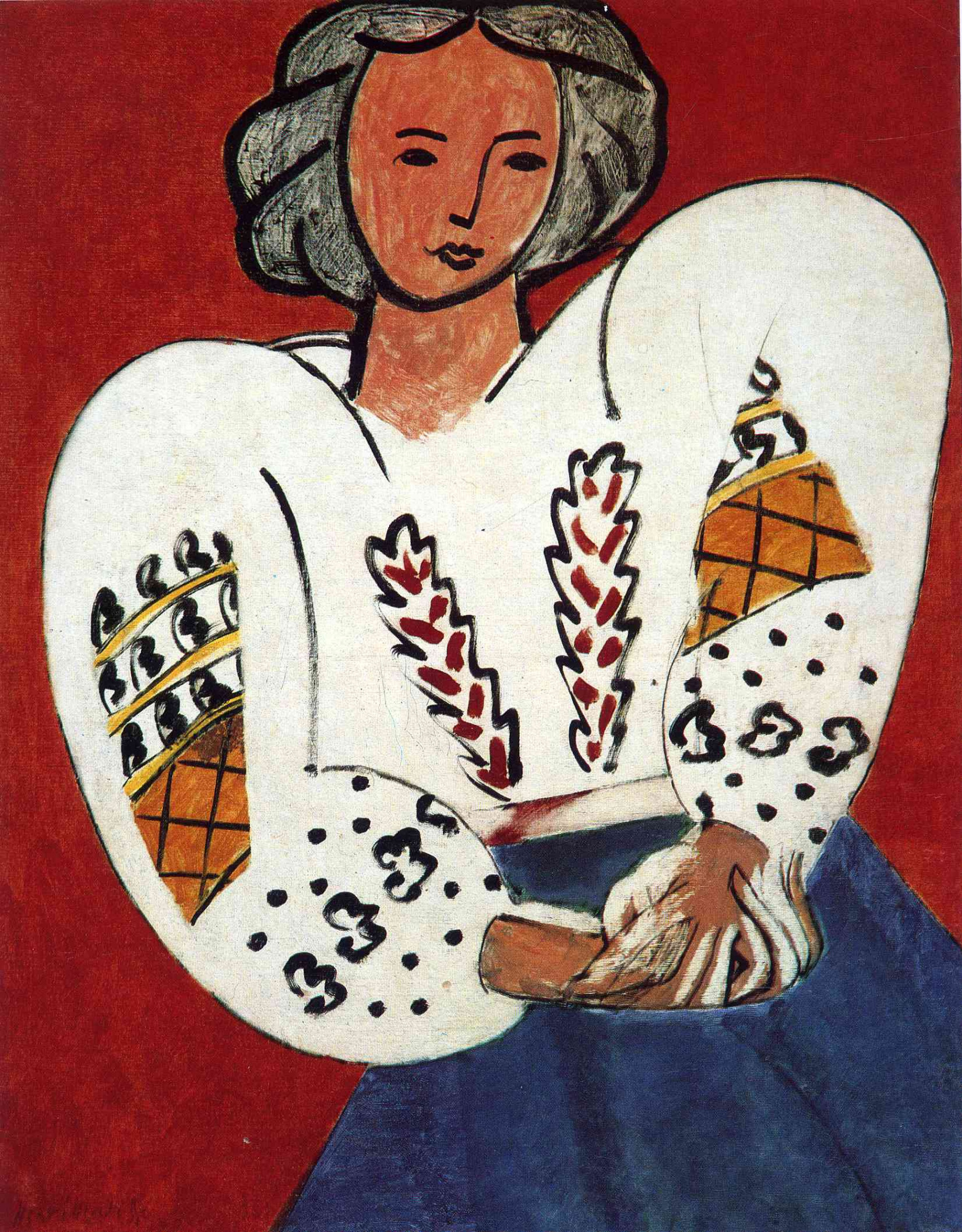Henri Matisse was fascinated by the cultures of North Africa and the Middle East.
In 1903 he visited an Islamic art exhibition at the Musée des Arts Décoratifs, Paris; in 1910 he traveled to Munich for a major display of Islamic objects and then to Spain to see Moorish architecture.
He also collected brilliantly colored and richly ornamented textiles, pottery, and tiles.
It was, however, the physical experience of these lands that proved to have the greatest impact on Matisse's vision and creativity.

Henri Matisse | Young Woman before an Aquarium (Jeune fille devant un aquarium) | Between September 1921 and February 1922. | Art Institute of Chicago













